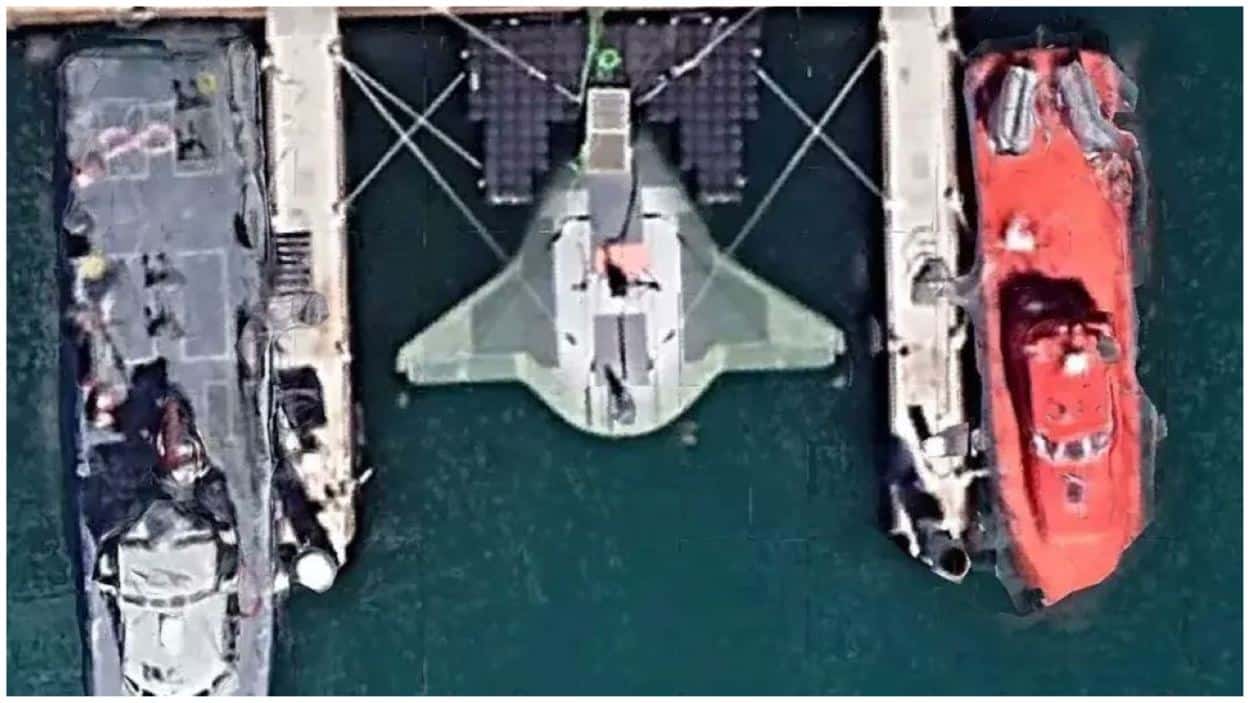Google Maps users recently unveiled an extremely secretive and potent weapon of the United States, the “Sea Devil,” near the San Diego Naval Base, specifically off the coasts adjacent to the Port Hueneme Naval Base in California.
Further investigations revealed that this was the Manta Ray, a U.S. Navy autonomous submarine that operated independently without human assistance.
Designed for enduring missions, the Manta Ray submarine’s vocabulary is inspired by its resemblance to the aquatic manta ray, with a design that allows it to remain submerged in low-power mode for prolonged periods. This innovation is a product of Northrop Grumman, crafted as part of a U.S. Navy initiative to enhance long-range, low-power submersible capabilities.
The Manta Ray represents the pinnacle of underwater drone technology. It can hibernate extensively on the ocean floor without the need for refuelling. Dr. Kyle Werner, the program manager at the Defense Advanced Research Projects Agency (DARPA), highlighted in a press release that the vessel employs advanced gliding techniques for swift underwater navigation.
Extensive tests conducted by the U.S. Navy along the Southern California coastline, which spanned over three months, have confirmed the robust capabilities of the Manta Ray. This submarine features a modular design adaptable to various mission requirements and payload sizes. It is engineered for easy deployment and transportation in standard shipping containers without requiring specialized port facilities.
This advancement in naval drone technology is part of a broader strategic effort by the U.S. Navy to counteract submarine activities from global rivals such as China and Russia, whose underwater drones are reported to possess the capability to traverse up to 6200 miles and carry nuclear warheads at speeds of up to 115 miles per hour (100 knots).






